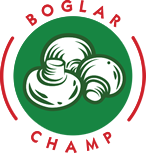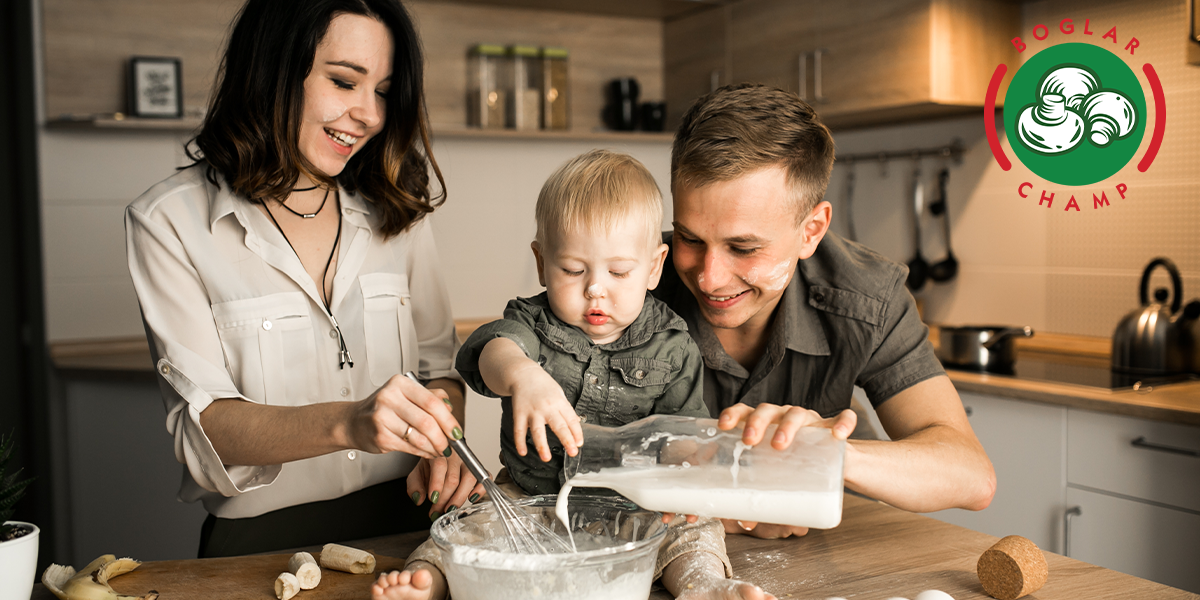Cooking, that is, preparing our food with our own hands and other activities related – like washing the dishes and cleaning the house are no longer considered “women’s work”, although they were once done almost exclusively by housewives and retired grandmothers. Fortunately, most families realise that the ability to do household chores should be part of every child’s upbringing, regardless of gender.
Cooking is, among others, a practical skill beneficial in the everyday life of a person’s adult life, without which it will be difficult for them to get by when they become independent. The younger a child is when faced with the fact that food does not just magically appear on the table, but that a whole series of work has to be done in order to arrive to the eating part, the more natural it will be for them as teenagers and adults that they should also have their share of household chores.
It’s a win-win: first of all, for the child, since they become a handy, self-inventing, well-established adult who is able to provide for themselves, for whom preparing a dinner becomes a routine, and develops gastronomic tradition in the family. https://www.boglarchamp.ro/en/what-are-the-healthiest-diets-in-2023/
The parent wins, because relatively soon they will have real help in the kitchen, and they won’t have to worry about what their son or daughter is going to eat for lunch after flying out the nest. Getting acquainted with kitchen activities as a way of life results in more independent, healthier adults who won’t live on fast food products. The whole society benefits from this, since healthier eating https://www.boglarchamp.ro/en/one-of-the-2023-gastro-trends-stars-the-healthy-and-environmentally-friendly-mushroom/ also reduces health care expenses.
Even very small children and toddlers can be involved in kitchen activities, although at first they will mostly “mess up” while they get to know the dishes and cutlery: they’ll unpack and pack up, so it is worth filling 1-2 bottom drawers or shelves with (non-fragile) things for them, with which they can play freely. Bowls, wooden spoons, whisks, small pots, lids, small cutting boards, plastic (or dull metal) cutlery are great toys for even a one and a half year old. By imitating adults, they get to know kitchen tools through play, and you don’t necessarily have to buy expensive baby kitchen equipment for them to fall in love with cooking activities at an early age.
Children of preschool age love to “knead” dough, that is, they will be happy to knead the flour https://www.boglarchamp.ro/en/cheese-and-mushroom-pie/ with water, cut the dough, tear the dumplings, measure the ingredients with a small spoon, add water or milk, stir the pancake dough, beat the eggs with a whisk.
Parents who have been following the BLW (baby-led weaning) https://www.boglarchamp.ro/en/mushrooms-and-complementary-feeding-when-and-how-to-include-them-into-our-toddlers-diet/ feeding guidelines since the early stages – i.e. they use snack feeding on demand, adjusted to the baby’s rhythm, physical development and readiness, including independent sitting and eating also the ability to use their hands – often unconsciously, as an organic continuation, the child is entrusted with more and more small tasks in the kitchen. Since BLW children are never fed, they always put food in their mouths themselves – first with their hands, then with cutlery – their well-developed manual dexterity and independence clearly predispose them to willingly and happily participate in kitchen work.
Clearly, when involving children in kitchen activities it’s important that this happens at their own pace and that they do not experience it as coercion or compulsory work. Because it’s not: parents and grandparents also consider it a joint game, a good opportunity to strengthen the existing bond and relationship with the child. You can talk, patiently answer the child’s constant questions, tell stories, and listen to music.
What to be attentive to?
When having to wait for something, the child may become impatient in some cases, but it may also happen that he wants to observe something uninteresting to us, but very new and very exciting processes for him. For example the dough rising, the pizza baking in the oven, https://www.boglarchamp.ro/en/pizza-with-mushrooms/ the water, the soup coming to a boil, https://www.boglarchamp.ro/en/bean-soup-with-champignon-mushrooms-and-cheese-dumplings/ the oil heating up in the pan, the stew simmering https://www.boglarchamp.ro/en/vegan-mushroom-stew/, and the mush puffing.
Even in such cases, we should pay close attention to the fact that safety is the most important thing: from an early age, the child should be made aware that the stove is hot, that they can burn their hands if they touch the hob; you might get splashed if you lean too close to the pot; this part of cooking is not a game, it can only be done with the permission of an adult, from a safe distance, and only to be watched.
Matches and lighters must be kept closed in a place where children cannot access them, and they must be taught that these are tools for adults and must not be played with under any circumstances. In addition to equipping our house with smoke alarms, it is important to take other preventive measures in case of fire.
Five- or six-year-old children can and should be taught what to do if they see fire or smoke: run outside as quickly as possible, shout loudly that there is a fire, and go to a prearranged, safe place. It can be useful, especially if you live in a large property, to prepare a fire protection plan, on which you plan the shortest escape route, and also get some fire extinguishers. Let’s talk to our five- or six-year-old child honestly about the dangers of fire, but at the same time, we can practice the route of the fire protection plan and what to do with them in a role-playing game, since children not only love to cook, but also to play firefighter.
What about cutting tools?
Of course, we don’t give them a filet knife that cuts the hair in half lengthwise, and we have to keep such very sharp tools locked away, in a place where children can’t reach them.
Perhaps, at first glance, it seems somewhat contradictory that we can entrust them with tasks in the kitchen, for example, they can already chop up vegetables at the age of four. Attention, a plastic knife will not be good for this purpose, but we also cannot use a sharp knife in the case of a preschooler – it is recommended to designate a so-called butter cutter as the child’s knife, which can be used to easily cut foods with a softer texture, such as potatoes, apples, mushrooms, but also, if necessary, you can also cut carrots into strips with it. At the same time, the edge must be so blunt that it cannot cut your finger even if the knife slips.
Introducing the graters also has to happen carefully: we can allow the child to grate softer foods, e.g. cheese – under supervision, but if the grater’s teeth are very sharp, we should constantly make the child aware of keeping their fingertips away.
Another thing worth keeping in mind is that communal cooking and baking should always start with washing your hands and tying on your apron. This can quickly become a routine, and you won’t forget it even in adulthood.
If baking and cooking becomes a regular part of the child’s life, we may reach a point when a five-year-old skillfully rolls out the pizza dough on the cutting board with a rolling pin after kneading it with their own hands and scraping off the pieces stuck to their hands with a little help; that they warn us during shopping that there is no yeast at home and the flour is out of stock; that they can enjoy a set of gingerbread cutters as much as the most expensive toy.
So let’s eat even more mushrooms in 2023!






